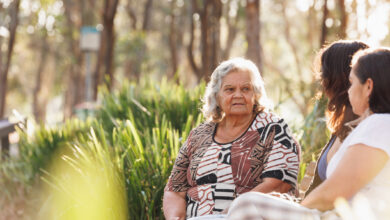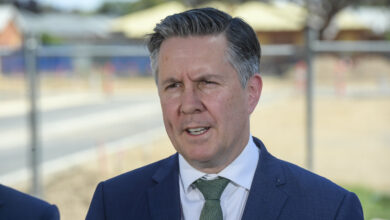Housing crisis may be exacerbating workforce shortage: report

Australia's soaring rental prices could be preventing aged care workers from taking on jobs in communities that need staff the most, a housing report published last Tuesday found.
The 'Priced Out' report by the national housing campaign 'Everybody's Home' revealed rising housing prices were causing substantial rental stress on Australia's essential workers.
It found that most of Australia's aged care workers spent over 77 per cent of their paycheck on rent.
Everybody's Home spokesperson, Maiy Azize, said high rental costs hindered many aged care workers from relocating to communities facing significant workforce shortages.
"Virtually no region in Australia is affordable for aged care workers," Azize said.
"Essential workers are the backbone of our communities, yet they are being priced out of them because of the unsustainable rent rises.
"Housing in Australia is broken."
Recent reports highlighted the country was amid a housing crisis, with rents at 'historical highs' across all capital cities and regional areas.
Most tenants are paying $135 (31%) and $140 (34%) a week more on housing and unit rent, respectively, than before the pandemic.
One of Australia's leading property marketplaces, Domain Group, said low supply and a rental market 'firmly locked in favour of landlords' made it difficult for people looking to rent.
Aged care and childcare workers and hospitality staff were hit the hardest, according to the coalition of welfare and housing advocacy organisations behind the 'Everybody's Home.'
The findings were derived from March 2020-2023 data on rents and award wages for Australia's 15 essential worker categories.
Azize said the reports' results helped explain why these industries faced significant workforce shortages.
"Put simply, workers can't pay rent to live in communities where staff might be desperately needed," she said.
"So many essential workers cannot afford to stay or move to parts of the country where these shortages are at their worst."
The aged care industry is expected to need almost 140,000 care staff by 2024-25 to plug workforce shortages, according to federal data.
On the other hand, up to 139,000 care workers said they would leave the sector by 2026 if there were no changes to the high workload and structural underpay.
Despite the industry expecting a 15% pay rise this July, workers and stakeholders fear it may not be enough to match the soaring living costs and housing rent.
Azize said households should only pay one-third of their income to rent to prevent deep cost of living stress.
"Housing in capital cities has become so expensive that several key workers would be left with less than $30 a day," she said.
"Those on the lowest awards would even be left with around $20 a day."
On average, aged care workers in capital cities earn a weekly net income of $747.
The medium rental price of a unit is $572 a week, meaning that aged care employees spend about 77 per cent on housing.
Most essential workers lost at least six hours a week from their income to those rent increases, equating to 37 workdays each year – more than many workers' annual leave entitlements.
Azize said the high rental prices put a significant financial strain on essential workers living alone.
"Those in coupled homes are probably financially dependent on their partner's income," she said.
"Our essential workers are used to dealing with crises, but this is one that calls for serious action from the federal government."
Azize said Australia's tax system was 'rigged against renters', saying the way housing subsidies are taxed benefited property investors but failed people wanting to purchase a home.
"It's well known that these tax settings have locked a generation of Australians out of the housing market and have driven up rents across the country, as our study results attest to," she said.
"What is less well understood is that this has meant that the cost to the budget is largely spent on measures that make affordability worse.
"And on top of that, Australia has a huge shortfall of social homes for people who can't afford rent."
The report recommended that people who sell a property for profit should pay more tax, which the government could funnel into additional social housing projects and affordable rental units.
Moreover, Azize suggested the government start building social and affordable housing at a rate of at least 25,000 each year, with a target of 500,000 homes.'
The government can fund those social homes by winding back handouts for investors and landlords, Azize said.
"This will help workers in severe rental stress and free up affordable rentals for everyone else."
Email: [email protected]






The housing crisis would be greatly aided by the scrapping of Negative Gearing which has turned housing into an income stream from those who can afford multiple properties. Of course our politicians will never do this, as the majority of them oven several homes and therefore benefit directly from negative gearing and therefore have no impetus to fix the housing crisis…Cha Ching.